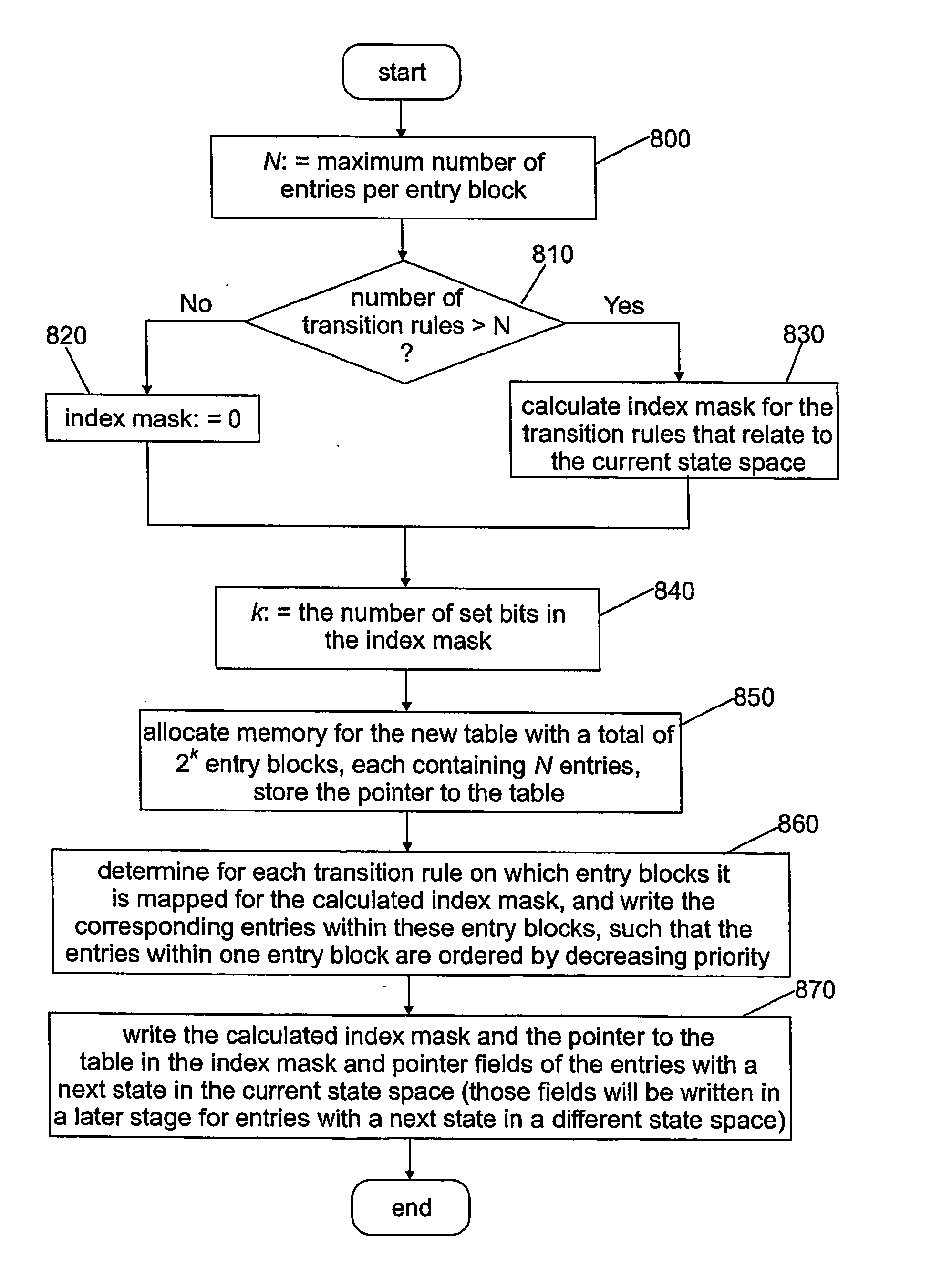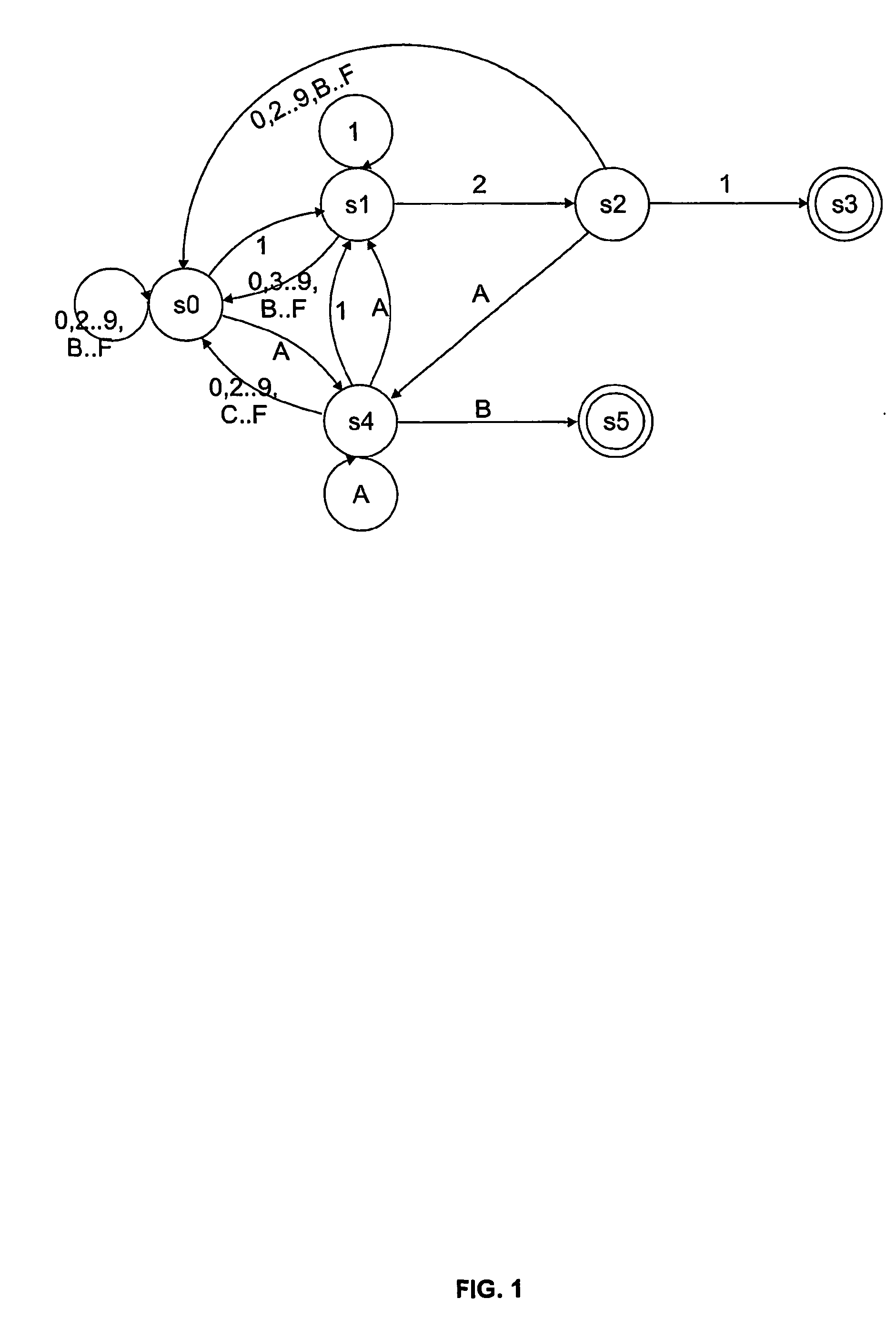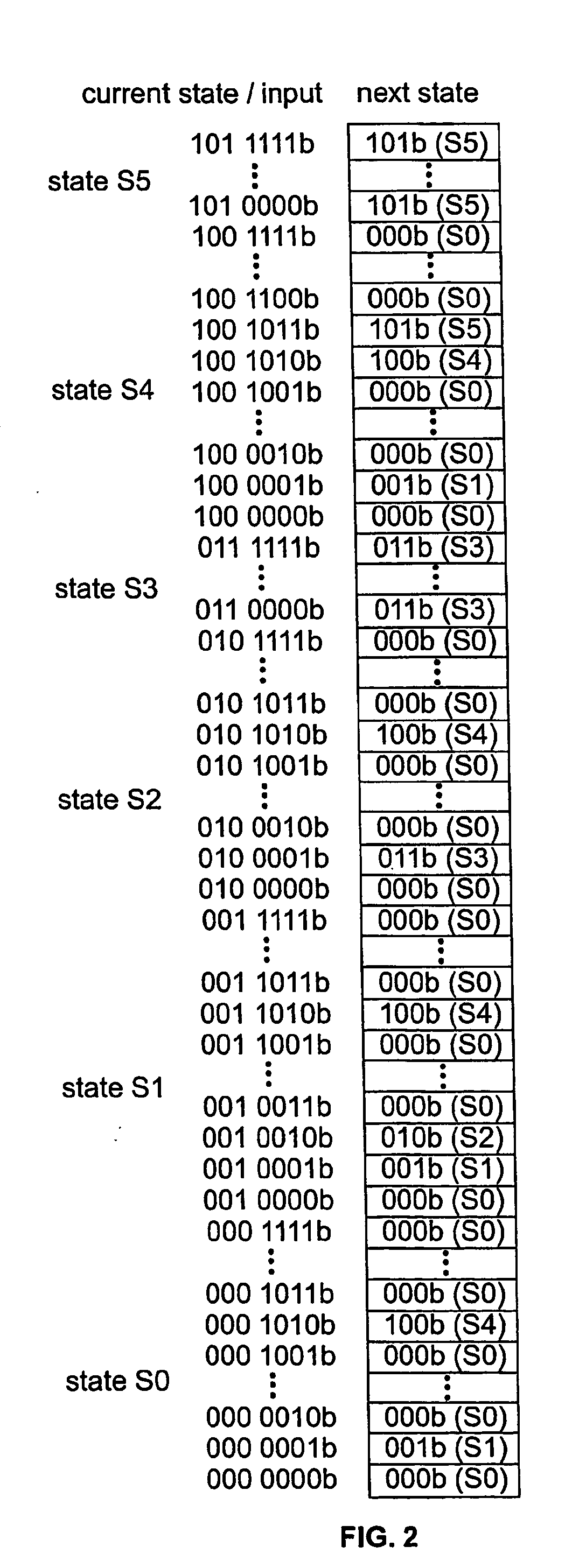Method and apparatus for deep packet processing
- Summary
- Abstract
- Description
- Claims
- Application Information
AI Technical Summary
Benefits of technology
Problems solved by technology
Method used
Image
Examples
Embodiment Construction
Programmable State Machine:
[0037] In a preferred embodiment of the present invention, there is provided a method to perform deep packet processing. The method comprises the creation of a data structure which improves the programmable state machine of the prior art. In the data structure, state transitions are represented as a list of so called state-transition rules, each containing a ternary match condition for the combination of the current state and input value, and a next state. With ternary match conditions, the matching patterns comprise bits having three possible states 0, 1 or X, X being a wild-card symbol for the “don't care” condition.
[0038] If a state-transition rule contains a ternary match condition that matches a given current state and input, then this state-transition rule is said to be matching. If multiple state-transition rules can all match the same current state and input, then these state-transition rules are assigned different priorities.
[0039] For a given...
PUM
 Login to View More
Login to View More Abstract
Description
Claims
Application Information
 Login to View More
Login to View More - R&D Engineer
- R&D Manager
- IP Professional
- Industry Leading Data Capabilities
- Powerful AI technology
- Patent DNA Extraction
Browse by: Latest US Patents, China's latest patents, Technical Efficacy Thesaurus, Application Domain, Technology Topic, Popular Technical Reports.
© 2024 PatSnap. All rights reserved.Legal|Privacy policy|Modern Slavery Act Transparency Statement|Sitemap|About US| Contact US: help@patsnap.com










